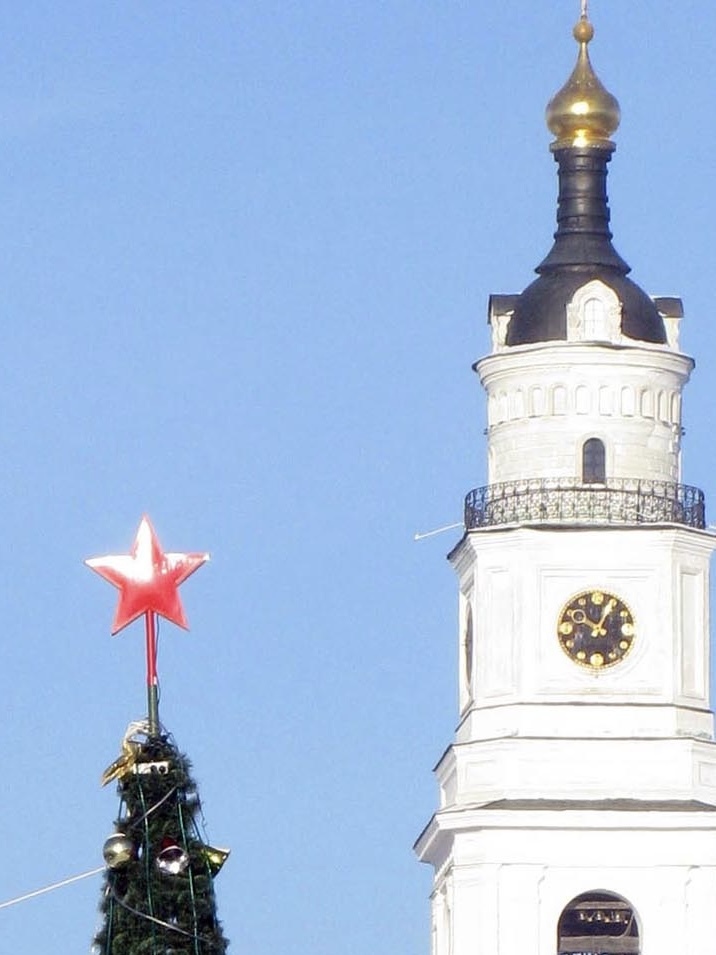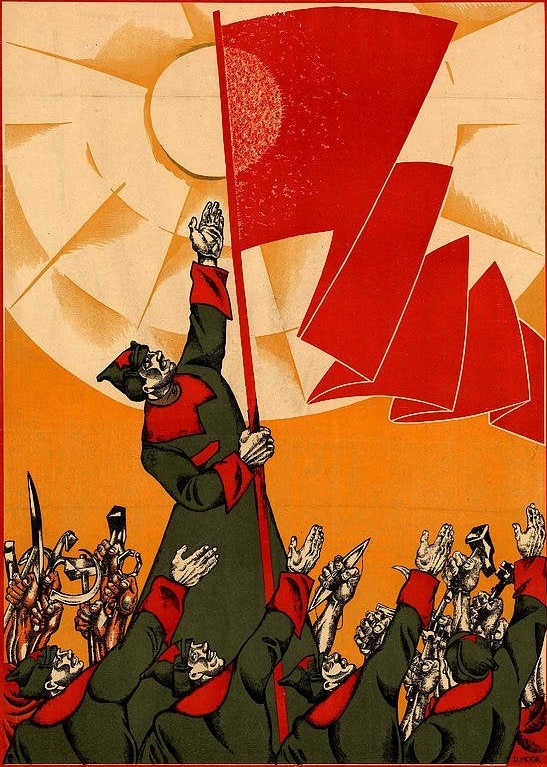For example,
60 seconds = 1 minute
60 minutes = 1 hour
24 hours = 1 day
7 day = 1 week
29-31 days = Month (approx.)
365/366 days = year
It's like for the imperial measurement of distance, where 1 mile = 5280 feet...
Edit: just to clarify, I'm more or less keen towards any consistent, decimal-based measurement systems like base-10 or base-12.
The only metric unit of time is the second. all the other ones are customary units that are geared towards living on Planet Earth. There was a movement for decimal time at one point, but it never really took off. Given that the length of a day changes, I don't see how it would remain stable either. Which is something that SI units try very hard to make sure doesn't happen.
Americans use the imperial system, yet claim not to be imperialist. Curious 🤔
12 hours in half a day is fine for me. 12 can be divided into halves, thirds, quarters and sixths. That's useful for planning out a day. Time is one of the applications where I don't have a complaint about using base 12.
Exactly why there are 12 months and 24h a day, for easy divisions.
I think the 12 months thing is more due to the cycle of the moon being about 12 per year right?
The real confusion is when you count the days in a month, or year...
we eat captured solar energy and rely on tides & animal behavior which is connected to lunar cycles, the sun and the moon are what our efforts to measure time are hinged on at the macro level. the biggest problem is that the sun and moon do not sync up neatly in their movements. there are solar calendars and lunar calendars and attempts to merge them are difficult mathematically.
for example:
Since each lunation is approximately 29+1⁄2 days, it is common for the months of a lunar calendar to alternate between 29 and 30 days. Since the period of 12 such lunations, a lunar year, is 354 days, 8 hours, 48 minutes, 34 seconds (354.36707 days), purely lunar calendars are 11 to 12 days shorter than the solar year. In purely lunar calendars, which do not make use of intercalation, the lunar months cycle through all the seasons of a solar year over the course of a 33–34 lunar-year cycle.
One can reach twelve joints on a 4-fingered hand with the thumb. That's the basis of the base-12 counting system.
Well, the time for eath rotation isnt a constant, it will slowly decelerate and days will be longer.
Using multiples of 10 for time was considered, but was a shitty option compared to the current deal. Months should all be 30 days and then have a free week at the end of the year tho, egyptian style.
they were, in ancient egypt. They were supposed to be dangerous days, because religion wanted to keep control of the people on the days they werent tied to the regular schedule, by scaring them.
Splitting hours and minutes into base 60 started with the Sumarians like 5000 years ago, passed down to the Babylonians, and just kind of stuck around. 60 is great because it has a bunch of factors - 1, 2, 3, 4, 5, 6, 10, 12, 15, 20, 30, and 60 - so it's easy to split up into even parts. Apparently it's called Sexagesimal

A year being ~365.25 days long is simply how many times the Earth spins on its axis during a full orbit around the sun, because the Universe does not give a shit about being neat and orderly. Months and weeks are just figuring out how to manage it the best we can. Kinda dumb that February has 28/29 days though, like there's a bunch of months with 31 days stop hogging them all and let February have a couple more, assholes.
Unfortunately, seasons, years, when it's light out compared to the length of a day... These are not conveniently metricised.
Since we are on the topic of time measurements, take Caesar and Augustus's names off of my calendar please and thank you.
Also, if you can fill in February to be full 30 days, that'd be great as well. Take a day off from each of the emperors.Wait, where does Caesar fit into the naming of calendar months?
Edit: I see, Julius Caesar for July. Now, I see fully your point
And beyond that September, October, November and December are just, essentially, Latin words for 7, 8, 9, 10. Which of course raises the obvious question/observation of “why the fuck are months 9-12 given names correlating to 7-10?” And the answer is… the above two months were shoved in. For reasons. Why not put them at the end? “Because fuck you, that’s why!” (There’s probably some reason and I don’t actually care. I’ve officially thought too much about Rome and Latin for the day)
It's actually January and February that were added in. Before that, there was just this gap during the winter when they didn't bother counting the passage of days until the start of spring was declared, in March. That's also why February is the short month, as it was the last added and just used up the remaining days.
Worth emphasizing that the year began in March – December means the 10th month because it was the 10th month, even after January/February were added
There were also superstitions about February - due to its role as a time for ritual purification and cleansing, that made them reticent to add days to it, so it stayed at the bare 28
https://www.almanac.com/how-did-months-get-their-names
March (Martius) was named for Mars, the god of war, because this was the month when active military campaigns resumed. May (Maius) and June (Junius) were also named for goddesses: Maia and Juno. April (Aprilis) is thought to stem from the Latin aperio, meaning “to open”—a reference to the opening buds of springtime. The rest of the months were numbered; their original names in Latin meant the fifth (Quintilis), sixth (Sextilis), seventh (September), eighth (October), ninth (November), and tenth (December) month.
Eventually, January (Januarius) and February (Februarius) were added to the end of the year, giving all 12 months proper names. January was named after Janus, the Roman god of beginnings and transitions. February’s name is believed to stem from Februa, an ancient festival dedicated to ritual springtime cleaning and washing.
Julian Calendar Updates When Julius Caesar became Pontifex Maximus, he reformed the Roman calendar so that the 12 months were based on Earth’s revolutions around the Sun. It was a solar calendar, as we have today. January and February were moved to the front of the year, and leap years were introduced to keep the calendar year lined up with the solar year.
The winter months (January and February) remained a time of reflection, peace, new beginnings, and purification. After Caesar’s death, the month Quintilis was renamed July in honor of Julius Caesar in 44 BC, and later, Sextilis was renamed August in honor of Roman Emperor Augustus in 8 BC.
Of course, all the renaming and reorganizing meant that some of the months’ names no longer agreed with their position in the calendar (September to December, for example). Later emperors tried to name various months after themselves, but those changes did not outlive them!
Writing this in 634.023.M3 Imperial Calendar i agree we should change it to juche
Calendar used in DPRK, basically normal gregorian but the dates are counted from 1912 as Juche era, in a combination of european system and partially Korean system.
Today date is: 19.08 Juche 112
Because there's 365 days in a year (duh). I mean, if it were, like, 200, then a year would be 0.7 season cycles?
Same for a day. If we set it to, say, 10000 minutes or whatever, noon could very well end up as the middle of the night eventually.
As for the minute and hour, how else would you fit seconds into a day? 24*60 square rooted for equal units? So we have 120 new minutes each 120 seconds long? I mean, I could see that sort of working? But it's still pretty weird, and not a true decimal. So I guess you'd have to rework seconds also.
Edit: months are based off the moon, and there would be no way to somehow make units of 10 months fit into a year, which literally cannot be anything other than 365 days, unless you want your afternoon tea parties 0.12 daylengths past midnight.
Please don't touch it now
-- the entire software developer community around the world
Just, https://www.youtube.com/watch?v=-5wpm-gesOY... (The Problem with Time & Timezones - Computerphile) ...
The main reason is because we use natural cycles that are important for civic and agricultural reasons as the basis of our measurements. And those cycles are unrelated phenomena that don't match with each other well.
Day and year are based (duh) on two solar cycles (Earth's rotation and translation), while the month and week are based on the lunar cycle of translation around the earth in roughly 28 days. When people tried to force lunar and solar calendars to fit, we ended up with the inconsistent months we have.
The 12/60 base divisions of the day were chosen before we had good calculators. Numbers with many divisors like 12 and 60 help a lot with mental math when you don't have calculators.
There have been proposals of better calendars. The French tried something during the revolution and other people as well. The French republican calendar was:
- 1 hour = 100 minutes
- 1 day = 10 hours
- 1 week = 10 days
- 1 month = 3 weeks
- 1 year = 12 months + 5 monthless holiday
Another idea is the Cotsworth Plan:
- 1 minute = 100 seconds
- 1 hour = 100 minutes
- 1 day = 10 hours
- 1 week = 7 days
- 1 month = 4 weeks
- 1 year = 13 months + 1 special monthless holiday
I like the French Republican Calendar, but I would change it to months with 6 weeks of 5 days instead. And divide the week into 3 work days, 2 weekends. But the Cotsworth Plan is a better compromise between lunar and solar cycles.
Neither are good decimal systems. But in the end, if we want to use both the year and the day we're fucked. There's no way of having a fully decimal system. The year is approximately 365.25 days, and 365 is an awkward number. It's only divisible by 5 and 73, so it's not possible to have good divisions of it that match adequately a 10 based grid. You could abolish months and just have 73 weeks of 5 days, but I see no advantage.
We could do away with the year and just keep the day. We could do something like
- 1 miliday= 1000 microdays (1 microday ≈ 0.086 seconds)
- 1 deciday = 100 milidays (1 miliday ≈ 1.4 minutes)
- 1 day = 10 decidays (1 deciday = 2.4 hours)
- 1 decaday = 10 days (1 decaday ≈ 1.4 weeks)
- 1 hectoday = 10 decadays (1 hectoday ≈ 3.3 months)
- 1 kiloday = 10 hectodays (1 kiloday ≈ 2.74 years)
But this system would be totally misaligned with seasons, moon phases, solar cycles, etc. One could argue that those things are not as important for everyday life as they used to be, and that's true. But they're still economically important and you'd have to implement special calendars to keep track of them. It seems something like the Cotsworth or French systems make more economic sense.
Aren't Juche years basically the standard measurement of years in the Gregorian Calendar, except it is equal to current year - 1948 (Creation of DPRK)?
Yeah but Juche years are better since you get to time travel to (Juche) 112 with all your fancy technology
It’s actually Juche 1 = Gregorian 1912 (Kim Il Snug’s birth year) BTW
Hot take: imperial units are fine for normie stuff (as in, not engineering or math or whatever)
They come in useful sizes! Feet are handier than meters and gallons are better than liters. And unit conversion between feet and miles, pounds and tons, etc. isn't something that ever happens in day-to-day life. It sounds silly to say that a mile is 5280 feet but I'm pretty sure that ratio was decided retroactively for the sake of making the system consistent. As in, no one knows or cares about converting between the two because we already know how long a foot is and how long a mile is. Also no one uses the obscure units like gills and barleycorns.
Feet are handier than meters and gallons are better than liters.
Wrong, youre just used to them. I roughly know what a liter of something weights, usually around a kg. A gallon tho? wtf i would know? I can easily compare meters of length to my arms or height, but i need more complex divisions for feet
A foot is as long as my forearm and a little longer than a literal foot, unless you've got big feet. An inch is as wide as my thumb which I have used to measure things cuz it's pretty exact. You're right that I don't know how much a gallon is in pounds though. It's like... more than a bag of apples but less than a box of soda
If you keep this nonsense up I will convert litres to kilograms and back into milligrams, I will. Right in front of you
Do it chump! I'll proceed to not read it because I don't know how much any of those units are 😤😤😤
1 litre of water weighs 1 kilogram. It also takes up a space of 1dm^3, or a cube that's 1x1x1dm. How is this possible? Because 1 times 1 times 1 always equals 1, so your cube is always 1 cubic decimetre. Or 0.01 decametre. Or 0.001 metre. Of course we can change some sides of this cube and still get 1dm^3.
I can do it the other way around too, 1 kilogram of water weighs 1 litre! And I can do it as many times as I want to!
1 gallon fills around 20 glasses which is about 10 tummies worth of fluid which if drunken all at once will make you weigh 1 baby heavier and produce 1 toilet worth of vomit.
I don't want to do it the other way around
I can do it with other units too. 1l of water at 20C heated by 1C converts to 1 calorie. The average glass holds 330ml of fluid, so I need to expand 0.33 calories to heat that glass up by 1C.
I actually kinda like the idea of the gallon due to how much beer that represents in a small unit, 1l is tiny.
1 cup of water takes 2 minutes of microwaving to make 1 serving of instant hot chocolate which contains however many calories idk I'm not gonna read the label.
Admit it, we have the superior measurements.
Brazilian here. You're just used to it because objects around you are imperial sizes. I live in a metric country so objects around me are metric sized. So I can easily eyeball metric units.
- 0.5 cm is the width of a pencil
- 2 cm is the size of a small coin (the American penny is roughly 2cm wide, BTW)
- 1 meter is roughly a long step
- 1 km is the distance you walk in roughly 20 minutes
- 1 liter is easy because in any metric country it's the volume of a standard soda bottle
- 1 kg is the weight of a small bean, rice or sugar bag, or the weight of a soda bottle, or the weight of a good sized cabbage.
Haha yeah in case it wasn't clear from my other comments, I don't actually think imperial is a better system. I just don't think it's as bad as everyone says it is. Like you said, you understand the size of these units relative to things irl and can just intuit them.
Converting between units doesn't come up often because like, when are you gonna need to know distances in coins? I mean it's cool that you can easily do that in metric but I couldn't care less that I can't switch between feet and miles.
P.S. do beans weigh as much as cabbages in Brazil? :0
Hahahhahaj, you were victim of my bad English. I meant a bag of beans! Hahahaha.
I was just giving an example of how you could have an intuitive idea of metric units by the using objects around you if you eventually need it.
Haha no problem, your English is waaay better than my Portuguese! I understood what you meant and that's the point I was trying to make too. I don't need to do any conversions to figure out what a mile, gallon, etc. is because I already know, just like you already know what a kilometer and liter are.
I mean, days of the year is fine as is because that matches seasonal cycles which is important for agriculture and the like. Ofcourse along the equator lunar calenders were historically used because they don't have different seasons but a calender used by everyone keeps things consistent for trade and the agricultural trade is still one of the most important things for humanity so it best remains a solar calendar.
As for time, 60 and 24 and in general multiples of 12 are great units because they can be easily divisible in many ways. This is why they were established as such in the first place, because Babylon had a big thing for what is called "extremely composite numbers" which are basically just a number that has more factors than any previous and equal to all subsequent ones (until the next extremely composite number) and all multiples of 12 (as far as I know) fall into this category. This means that units that are multiples of 12 both easily divide into each other (making it useful for changing between units) and easily divide into many other numbers making it easier to schedule a day as you have nice clean boundaries.
What about the 365 days/year, tho, or the 7 day/week unit translation? They don't make much sense to me...
















